Week6
-> 2023 08 Nov.
The Language Of Animation: Mise-en-Scène
A French term meaning what is put into a scene or frame ( Everything is in the scene! )
• Visual information in front of the camera
• Communicates essential information to the audience
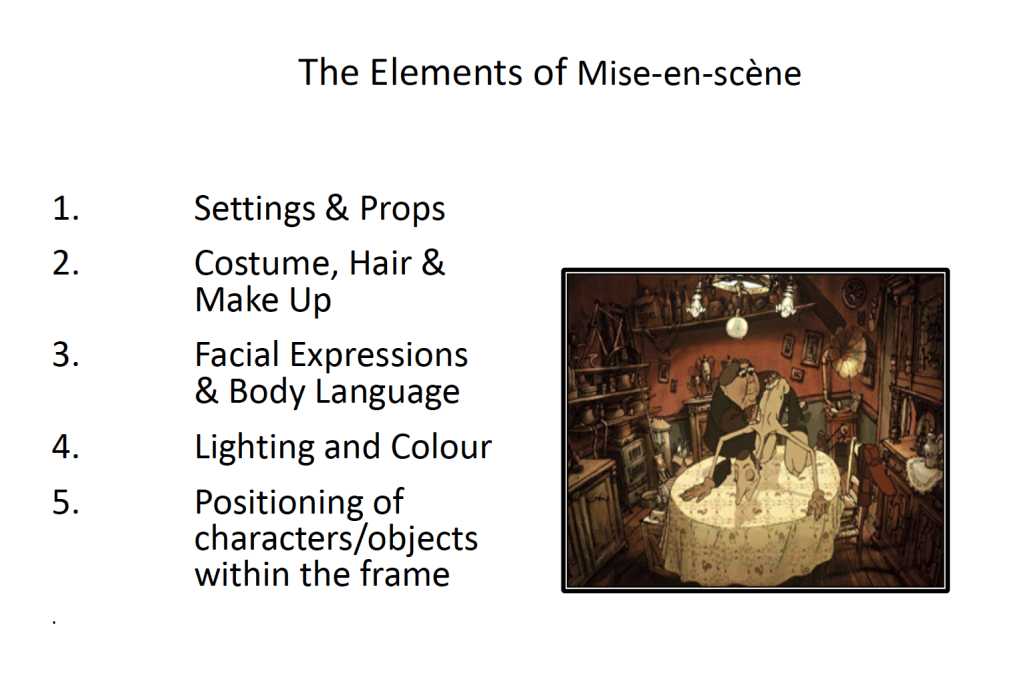
1. Settings and Props
• Film and animation heavily rely on settings and locations.
• Sets can be constructed from scratch, or considerable effort is invested in discovering existing settings.
• Settings have the ability to influence an audience by creating specific expectations and then deviating from them.
Props:
- Location: An American Tail, Manhattan -> to reveal the background of a story
- Toy Story -> to tell the background and personality of characters
- The Godfather -> To enhance the atmosphere and emotion of actors.
2. Costume, hair & make-up
Costume, hair, and makeup serve as immediate indicators revealing a character’s personality, status, and occupation.
It can communicate the information of a character to the audience.
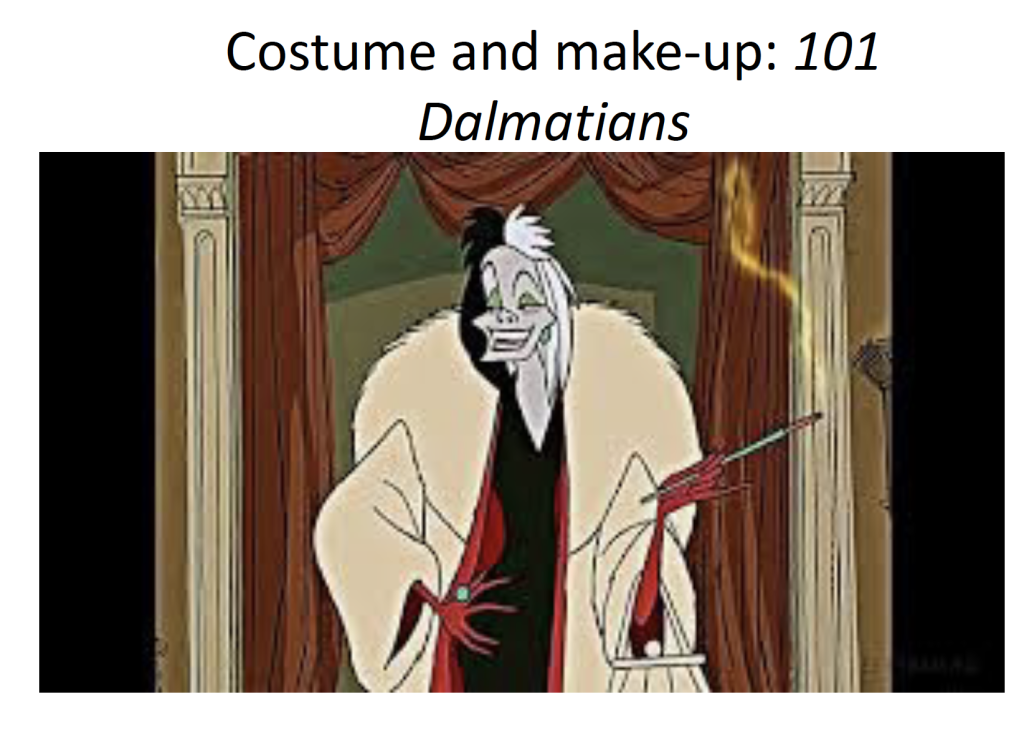
Decades after its initial release, “101 Dalmatians” remains an enduring fashion icon, continuing to influence and captivate audiences with its distinctive and timeless style. The film’s impact extends beyond the realm of animation, as its characters’ fashion choices continue to inspire contemporary trends and contribute to the ongoing fascination with the iconic looks showcased in this beloved classic.
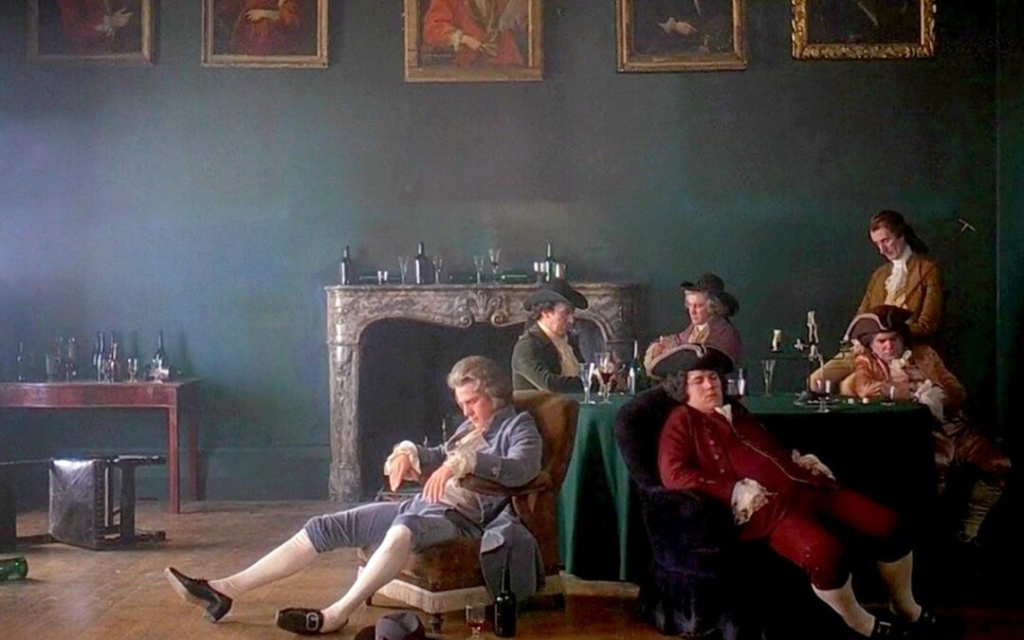
The clothes in “Barry Lyndon” are really well-made and show a lot of attention to detail. They make you feel like you’re in the 18th century, and the designer did a great job making everything look real. This makes the movie even more awesome and helps you feel like you’re really part of the story.
3. Facial Expressions & Body Language
Facial expressions offer a straightforward indication of a person’s emotions. Additionally, body language can also reveal a character’s feelings toward another character or reflect the status of their relationship.
Facial and body expressions can be a reflection of characters’ relationships. We can know how their emotion toward a character feels toward another.
4. Positioning of Characters & Objects within a frame
The arrangement within a frame can direct our focus to a significant character or object. Animators can employ positioning to signify relationships between individuals.
We can use position to indicate relationships between two people. ( how intimate they are )
For most people, it is not so obvious to notice the relationships depending on their position.
5. Lighting & Colour
Lighting and color can be manipulated to achieve diverse effects, such as emphasizing crucial characters or objects in the frame, creating an air of mystery by shading parts of the face and body, and conveying a character’s mental state or hidden emotions.
It can be used to achieve effects:
- To highlight characters and objects within the frames
- Make characters look mysterious or special by shading sections of faces or bodies
- Reflect a character’s mental state or emotions.
Low Key Lighting:
- Developed using only key and backlights
- Generates sharp contrasts between light and dark areas
- Forms deep, distinct shadows and silhouettes
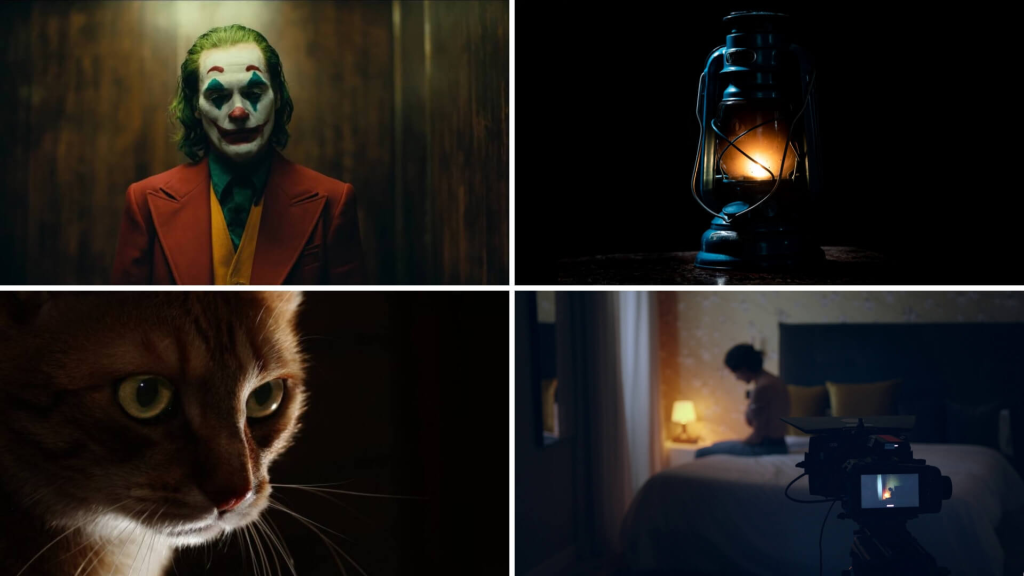
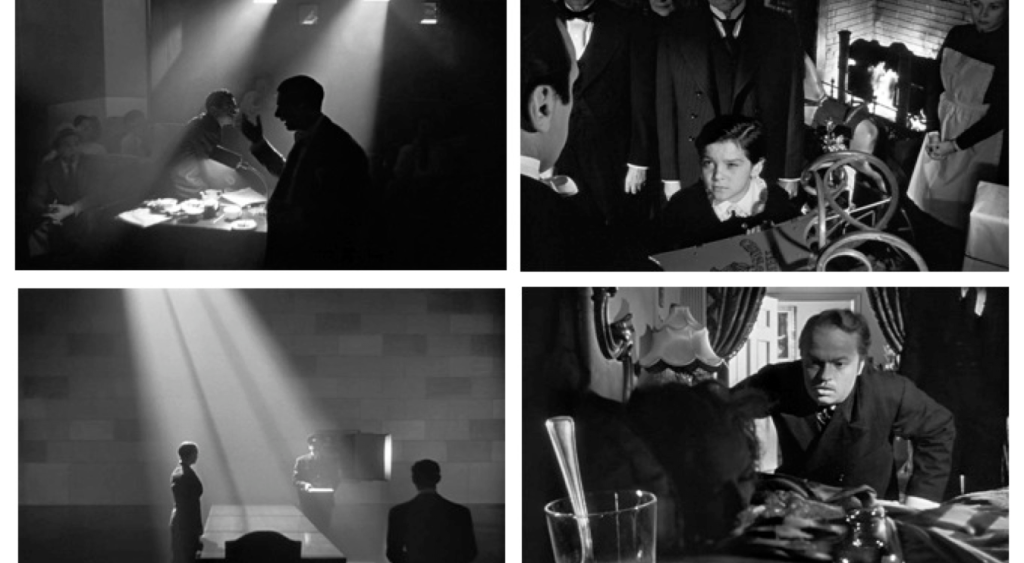
High contrast lighting
Integrate color palette and tend to have layers.
All in one scene, a shot can tell a story enough.
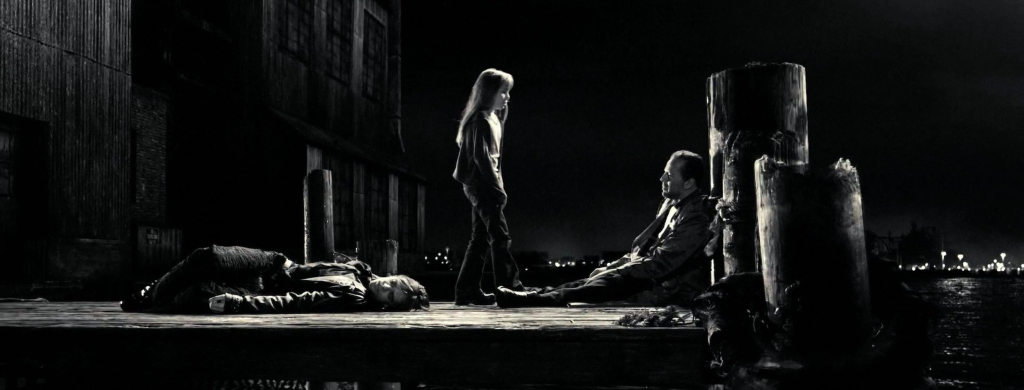
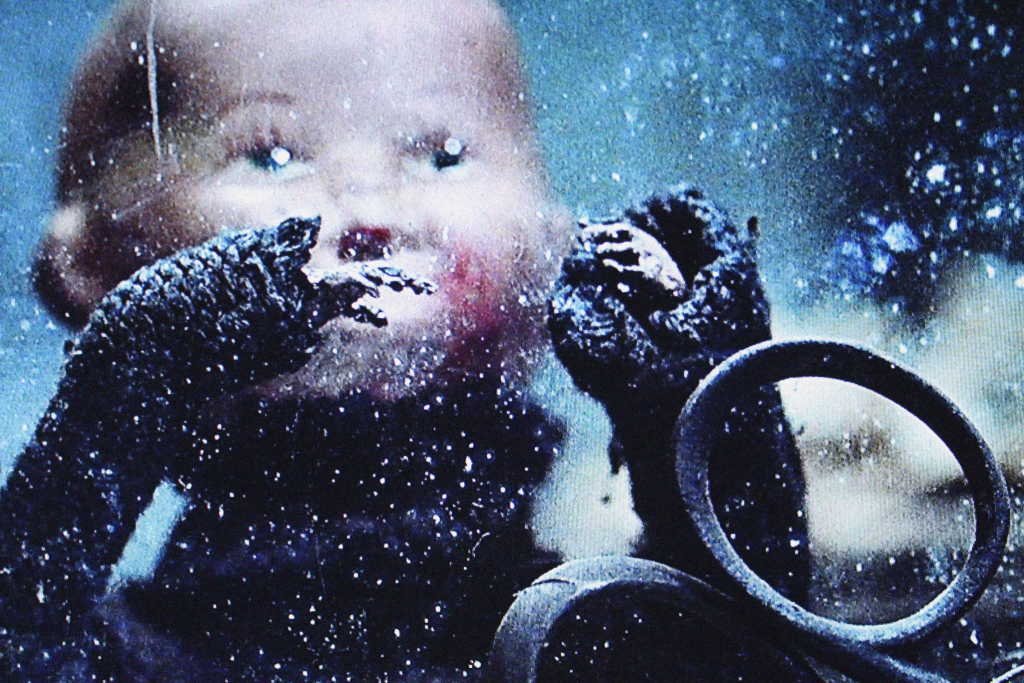

High Key Lighting ( I love using high key lighting for my 3d illustration work! )
- Utilizes more filler lights
- Aims for natural and realistic lighting
- Achieves brightly lit sets or a sunny day (right)
- natural and realistic to our eyes
- Brightly used in style frames setting
Illuminating ideas with high-key lighting.
A key light is the main source of light in a video or photo. High-key lighting results in brightly lit subjects with more filled light and softer shadows. Fill lights are used to increase the amount of ambient light in a scene and reduce the contrast.
Adobe https://www.adobe.com/uk/creativecloud/video/discover/low-key-vs-high-key-lighting.html
- High-key lighting reveals everything, avoiding the guidance of the audience to a specific point of view and prioritizing the script and actors’ dialogue, as explained by Koretz.
- Commonly used in commercials, nature documentaries, news broadcasts, professional photo shoots, and vlogs, high-key lighting ensures an unobtrusive presentation of educational or persuasive messages.
- Spike Jonze’s “Her” employs high-key lighting to visually convey passion, while Marvel movies like “Thor: Love and Thunder” use it to signify an upbeat tone.
- In spectacular moments like the first musical number in “La La Land,” high-key lighting is utilized to accentuate dazzling visuals.
In the barber of Seville, we can see tone of value can be united and formed a style.
–
Put simply, natural light comes from the Sun, while artificial light is made by things like lamps. ( LINK )
Example: Paper Man
In this movie, it is important to know what is the scource of your light.
- Is the light from the window?
- Is the light a spotlight?
- Light can be directed and be a certain style
Colour and Film
Example: Cries and Whispers
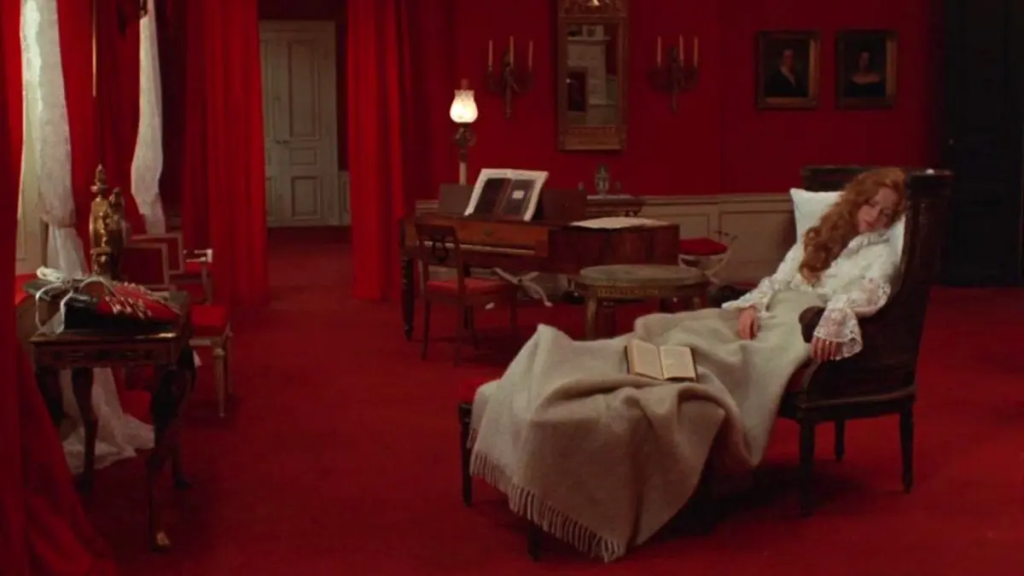
The entire atmosphere in Cries and Whispers is saturated with red. The film’s predominant scarlet tones, partly balanced by the blacks and whites of dresses or sheets, symbolize not only the “soul” but also, in a very literal sense, human blood.
More study about color and film:
- Link 1 How to Use Color in Film: 50+ Examples of Movie Color Palettes
- Link2 THE MANY TYPES OF COLOR IN FILM
We can use a color tone/ color grid to measure whether the color of the movie is consistent.
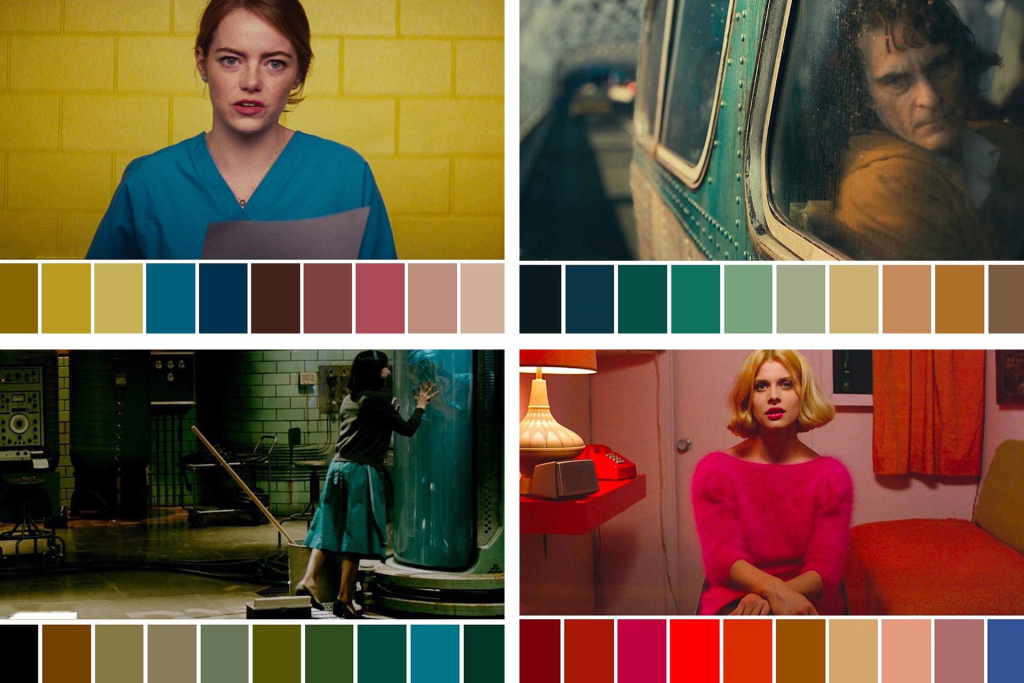
Color and Film: The Secret of Kells
In the movie the secret of kells, I love how art style frames it has. There are many scenes from nature scenery. They all formed a peace and natural atmosphere with just basic natural colors like green, yellow, and brown.
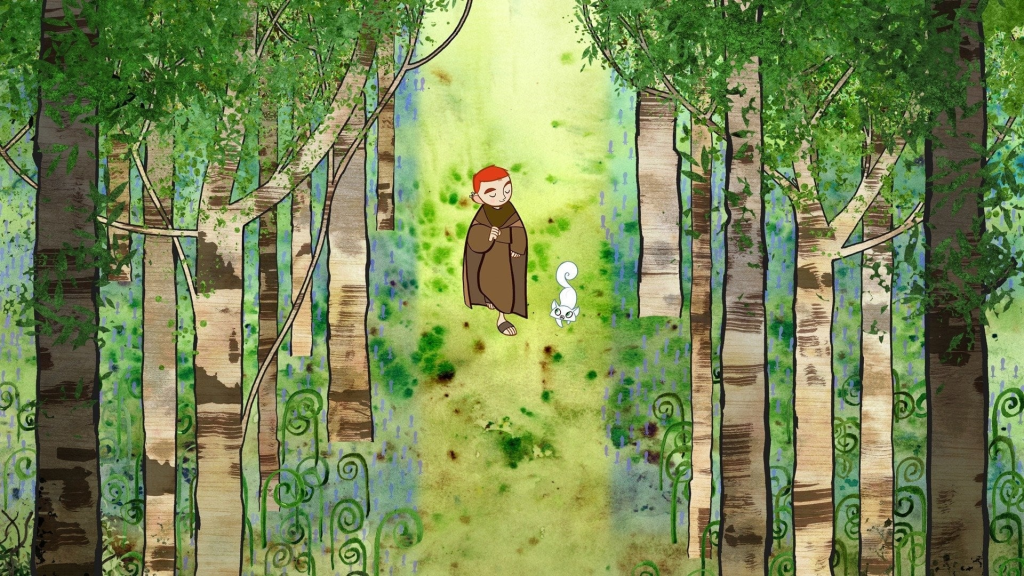
The Secret of Kells lovingly celebrates the Book of Kells using lots of beautiful green colors to make the story feel magical. It takes inspiration from Irish stories, featuring characters like Aisling and a cute cat named Pangur-Ban. Though some parts might be a bit scary for younger viewers, the movie is mostly about how imagination and art can turn dark moments into something bright, with the green colors making it all feel enchanting.

In this film, there’s not much talking, but the timing, sound, and how the pictures tell the story make that not really a big deal. The most important parts of the film are the places, characters, and, of course, the moving drawings that are full of lines and colorful details.

Link more about the movie color palette.
Depth-of-field
The distance from the near to the farthest that objects are in focus.
Depth of field, in the context of film and photography, refers to the range of distance where all objects appear acceptably sharp. It encompasses the area both in front of and behind the principal point of focus that remains in acceptable focus.

Deep Focus
Using the camera and lights to make both close and far things look clear is a technique. It helps the filmmaker draw attention to something, like a character or object, that might be far away.
The deep focus shot is designed on purpose to enhance concentration on the main objects and blur small others in the background.
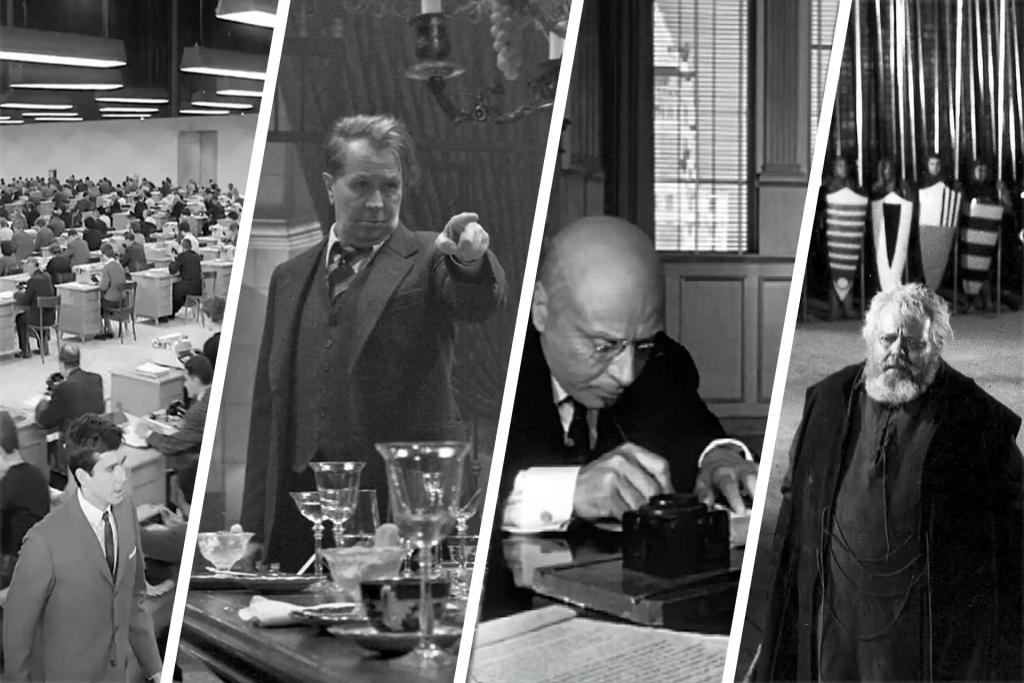
The video showcases successful applications of the deep focus technique in movies from the past and present. It also questions whether the prevalent use of this style in modern films will lead to a shift from the popular shallow depth of field to a trend where most of the shot is sharply focused. If this happens, learning how to achieve this look could be valuable to stay ahead of the curve.
–
Shallow Focus
Shallow focus in photography means having a blurry background, giving photographers control over what the viewer focuses on and allowing them to convey a specific mood. This technique, used in both photography and cinematography, helps capture clear subjects in the front while keeping the background sharp, avoiding distractions like blurred backgrounds or busy scenes.
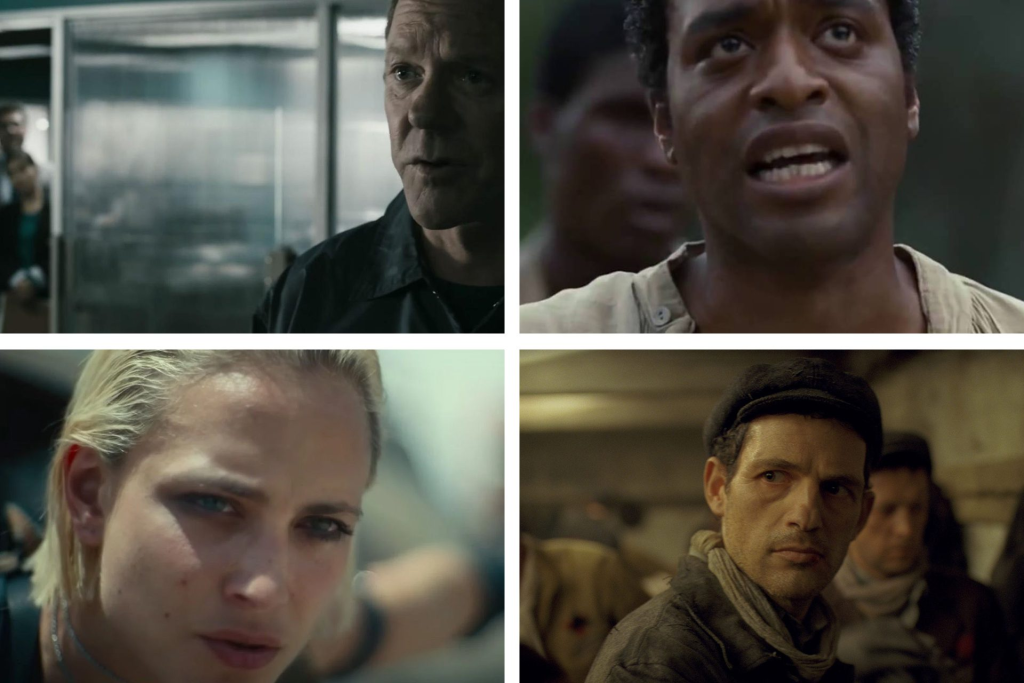
Camera-to-subject distances
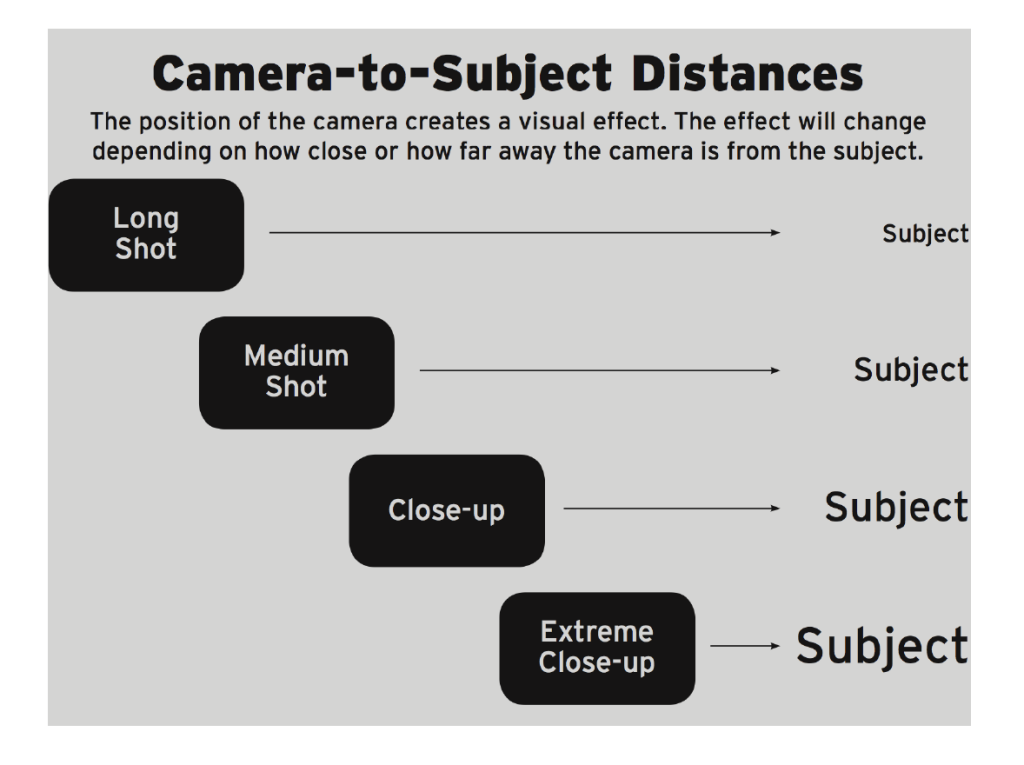
With the help of this guideline, we can start to think about how we use camera shots to build a style or our animation.
9 Types of Shot
Breaking down a script into individual shots involves considering shot sizes, a key element in translating words and emotions into visual images. Each shot in a film contributes to visual storytelling, and choosing the right size requires evaluating its role in the story, the intended visual message, and the overall visual concept of the film.
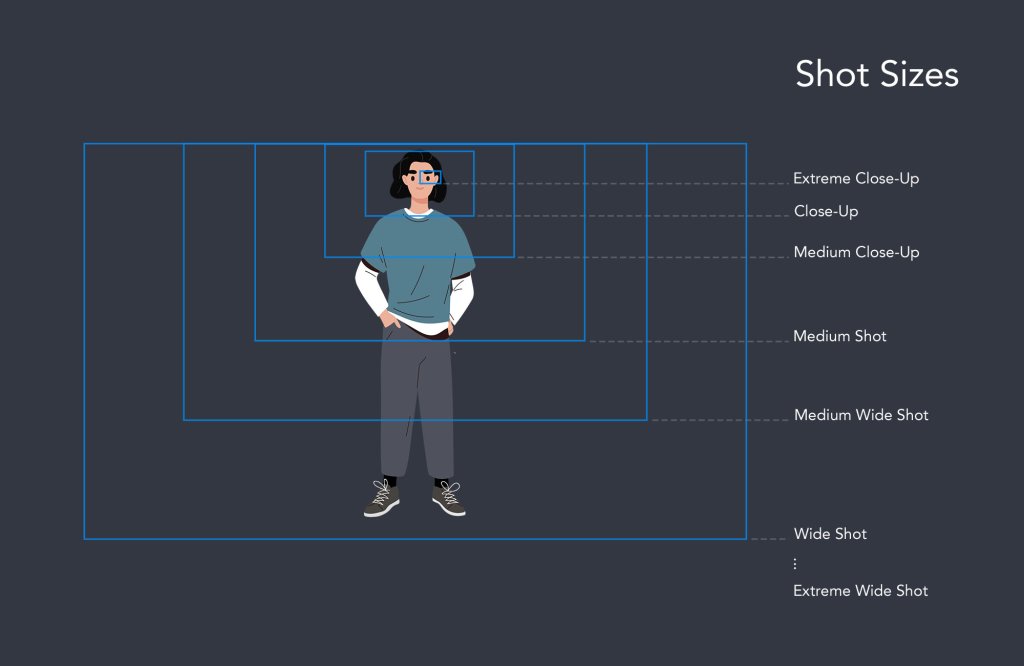

Extreme close-up (ECU)
The Incredibles ( They used ECU a lot in the movie. )
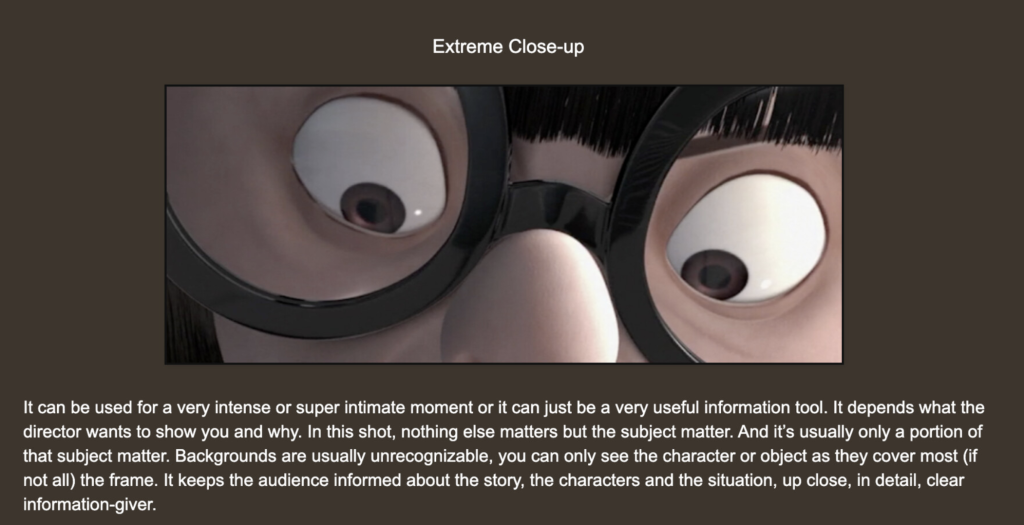
Close Up (CU)
In a close-up, something is filling the large part of the image. That can be a character’s face, some other body part, or a certain prop. By using a close-up, filmmakers are putting something to the center of the audience’s attention in an image.
Sometimes, you can still tell a story without so much details.

Medium Close-Up (MCU)
A medium close-up shot of a character shows them approximately from the chest or shoulders up to the top of the head. Medium close-up shots are slightly wider than close-ups and closer than medium shots. They concentrate on a character’s face while still being wide enough to imply the body language.

Mid-Shot (MS)
A medium shot is tighter than a medium wide shot and wider than a medium close-up, even though they sometimes cannot be distinguished exactly. It usually contains one or more characters from the waist up, including their close environment, giving the opportunity to put a person in context with their immediate surroundings.
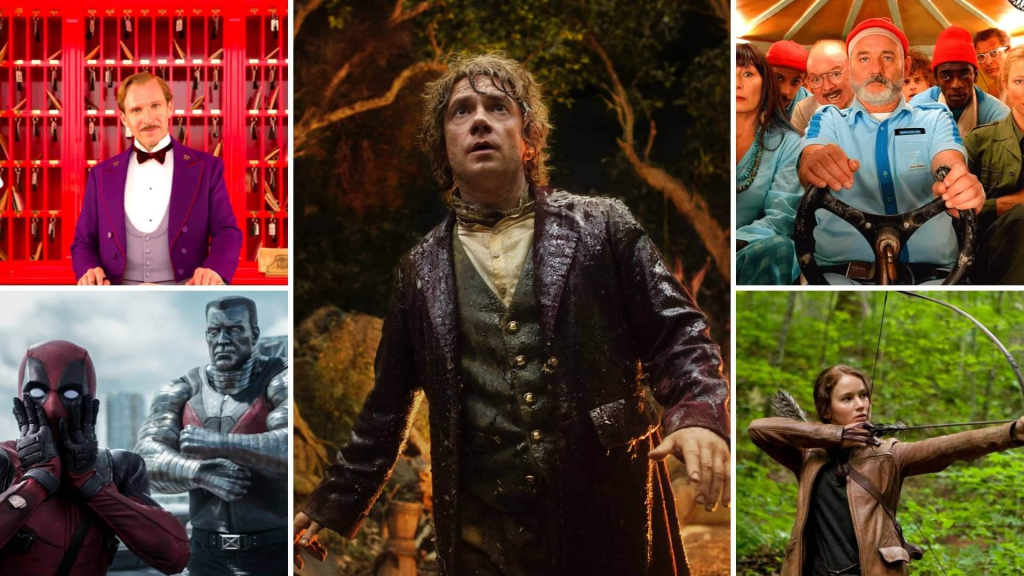
Wide Shot (WS) or Long Shot (LS)
The wide shot (aka long shot) is a camera shot that balances both the subject and the surrounding imagery. A wide shot will often keep the entire subject in frame while giving context to the environment.
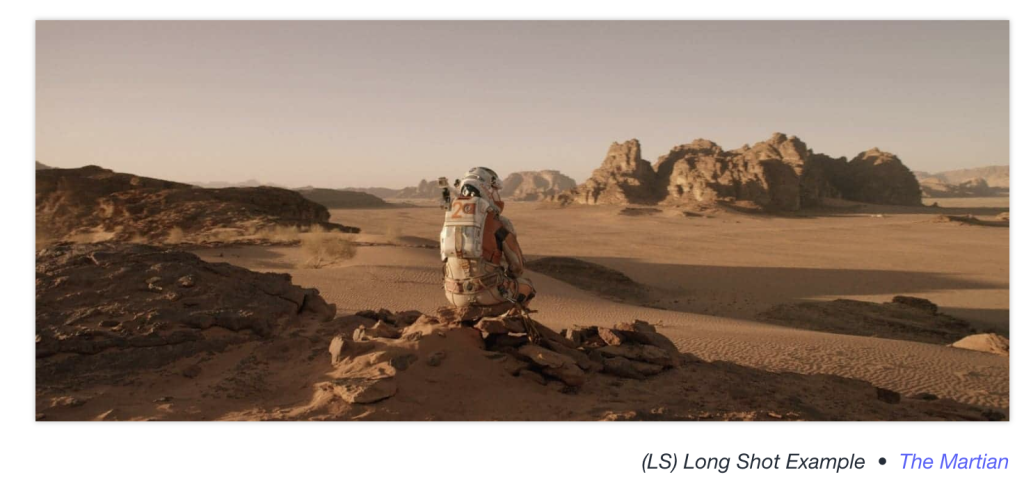
Extreme long shot
Extreme Wide Shot (EWS)
An extreme wide shot (aka extreme long shot) is a camera shot that will make your subject appear small against their location. You can also use an extreme long shot to make your subject feel distant or unfamiliar.
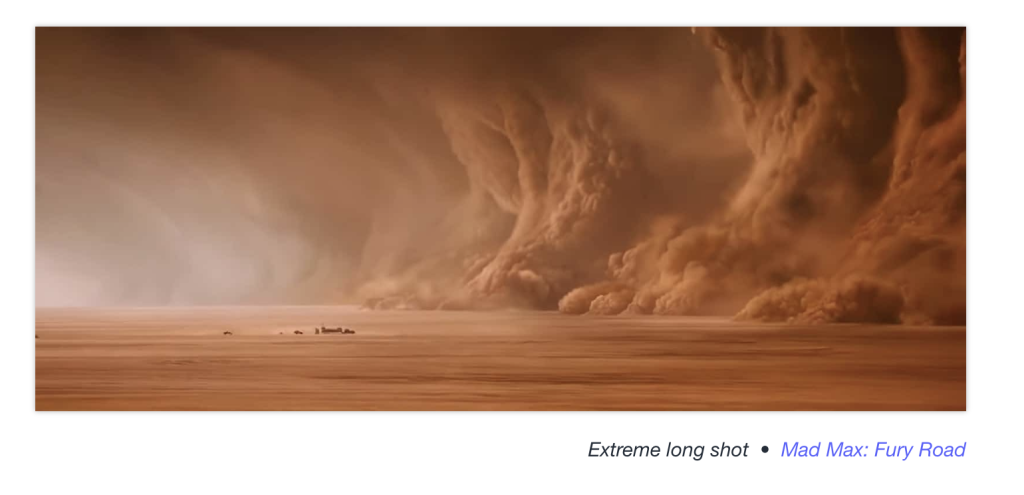
Reading list
- Buchan, S. (Ed.) (2013). Pervasive Animation. London: Routledge
- Horness Roe. A. (2013) Animated Documentary. Basingstoke: Palgrave Macmillan.
- _____ (2016) ‘Against Animated Documentary? International Journal of Film and Media Arts
- Sammond, Nicholas (2018). ‘Race, Resistance and Violence in Cartoons’. The Animation Studies Reader. Nichola Dobson, Annabelle Honess Roe, Amy Ratelle, Caroline Ruddell (Eds). London: Bloomsbury Academic.